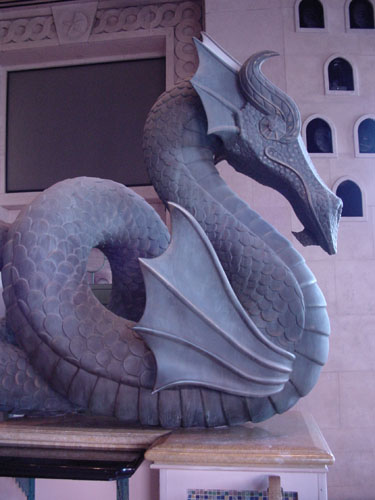 GFRC Sculpture
GFRC Sculpture
For many sculptors, concrete is the only material that will do. Depending on how the sculpture is fabricated, however, concrete can also be a difficult sculpture material to work with. Carving solid concrete by hand, for example, is a complicated and error-prone process. Some people who work with wet concrete apply it to a framework made of heavy aluminium wire, which holds the cement in place while it dries. Obviously, fine details and extremely complex shapes would be difficult using this method.
Stromberg's GFRC sculptures are cast using molds. That means we can achieve the kind of fineness in detail and complexity in design that are impossible with other methods. Facial features, a horse's mane, the lines on a turtle's shell - they can all be depicted in a life-like manner, without errors and inconsistencies. Because GFRC sculptures weigh only a fraction of sculptures made of pre-case concrete, all those shapes you thought would be impossible with concrete can be achieved with ease. As a sculpture material, concrete definitely has its problems - concrete sculptures kept outside can swell and crack over time. Corrosion is also an issue. None of these issues apply to Stromberg's fiberglass reinforced concrete sculptures, however. GFRC sculptures are low maintenance, and can withstand the elements without swelling or cracking. Objects made of GFRC can even be placed under water. With a number of finishes available, including one that lets you paint your GFRC sculpture any color you'd like, GFRC is a lightweight, aesthetically-pleasing, versatile, and durable material for your architectural sculpture.



